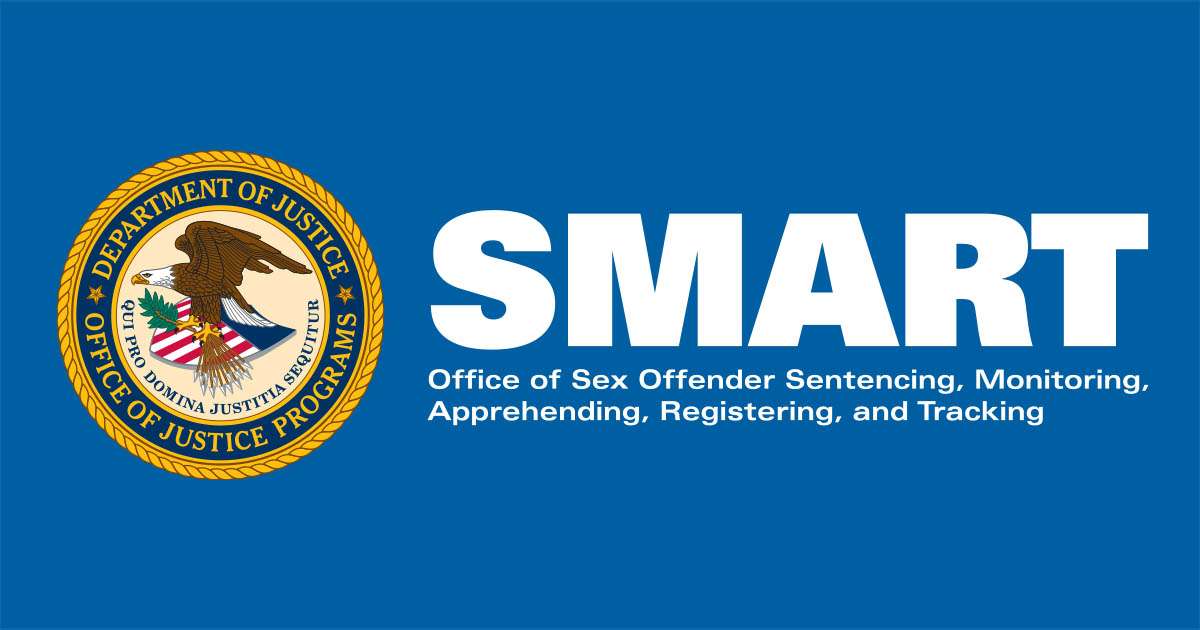-
Alexander, J. F., & Parsons, B. V. (1973). Short-term behavioral intervention with delinquent families: Impact on family process and recidivism. Journal of Abnormal Psychology, 81, 219–225.
-
Asarnow, J. R., Carlson, G. A., & Guthrie D. (1987). Coping strategies, self-perceptions, hopelessness, and perceived family environments in depressed and suicidal children. Journal of Consulting and Clinical Psychology, 55, 361–366.
-
Asarnow, J. R., & Bates, S. (1988). Depression in child psychiatric inpatients: Cognitive and attributional patterns. Journal of Abnormal Child Psychology, 16, 601–615.
-
Asarnow, J. R., Goldstein, M. J., Thompson, M., & Guthrie, D. (1993). One-year outcomes of depressive disorders in child psychiatric in-patients: Evaluation of the prognostic power of a brief measure of expressed emotion. Journal of Child Psychology and Psychiatry, 34, 129–137.
-
Asarnow, J. R., Thompson, M., Hamilton, E. B., Goldstein, M. J., & Guthrie, D. (1994). Family-expressed emotion, childhood-onset schizophrenia spectrum disorders: Is expressed emotion a nonspecific correlate of child psychopathology or a specific risk factor for depression? Journal of Abnormal Child Psychology, 22, 129–146.
-
Barrett, P. M., Dadds, M. R., & Rapee, R. M. (1996). Family treatment of childhood anxiety: A controlled trial. Journal of Consulting and Clinical Psychology, 64, 333–342.
-
Beelmann, A., Pfingsten, U., & Losel, F. (1994). Effects of training social competence in children: A meta-analysis of recent evaluation studies. Journal of Clinical Child Psychology, 23, 260–271.
-
Bifulco, A. T., Brown, G. W., & Harris, T. O. (1987). Childhood loss of parent, lack of adequate parental care and adult depression: A replication. Journal of Affective Disorders, 12, 115–128.
-
Borduin, C. M., Mann, B. J., Cone, L. T., & Henggeler, S. W. (1995). Multisystemic treatment of serious juvenile offenders: Long-term prevention of criminality and violence. Journal of Consulting and Clinical Psychology, 63, 569–578.
-
Brent, D. A., Kolko, D. J., Allan, M. J., & Brown, R. V. (1990). Suicidality in affectively disordered adolescent inpatients. Journal of the American Academy of Child Adolescent Psychiatry, 29, 586–593.
-
Butler, S. F., & Strupp, H. H. (1986). Specific and nonspecific factors in psychotherapy: A problematic paradigm for psychotherapy research. Psychotherapy, 23, 30–40.
-
Burns, D. D., & Nolen-Hoeksema, S. (1992). Therapeutic empathy and recovery from depression in cognitive-behavioral therapy: A structural equation model. Journal Consulting and Clinical Psychology, 60, 441–449.
-
Cohen, J. A., Mannarino, A. P. (1996). A treatment outcome study for sexually abused preschool children: Initial findings. Journal of the American Academy Child and Adolescent Psychiatry, 35, 42–50.
-
Coie, J. D., Watt, N. F., West, S. G., Hawkins, J. D., Asarnow, J. R., Markman, H. J., Ramey, S. L., Shure, M. B., & Long, B. (1993). The science of prevention: A conceptual framework and some directions for a national research program. American Psychologist, 48, 1013–1022.
-
Cooley, E. J., & Lajoy, R. (1980). Therapeutic relationship and improvement as perceived by clients and therapists. Journal of Clinical Psychology, 36, 562–570.
-
Crits-Christoph, P., Baranackie, K., Kurcias, J. S., Beck, A. T., Carroll, K., Perry, K., Luborsky, L., McLellan, A. T., Woody, G. E., Thompson, L., Gallagher, D., & Zitrin, C. (1991). Meta-analysis of therapist effects in psychotherapy outcome studies. Psychotherapy Research, 1, 81–91.
-
DeBellis, M. D., Baum, A. S., Birmaher, B., & Ryan, N. D. (1997). Urinary catecholamine excretion in childhood overanxious and posttraumatic stress disorders. Annals of the New York Academy of Sciences.
-
Diamond, G. S., Serrano, A. C., Dickey, M., & Sonis, W. A. (1996). Current status of family-based outcome and process research. Journal of the American Academy of Child and Adolescent Psychiatry, 35, 6–16.
-
Dodge, K. A., & Somberg, D. R. (1987). Hostile attributional biases among aggressive boys are exacerbated under conditions of threats to the self. Child Development, 58, 213–224.
-
Dodge, K. A., Price, J. M., Bachorowski, J., & Newman, J. P. (1990). Hostile attributional biases in severely aggressive adolescents. Journal of Abnormal Psychology, 99, 385–392.
-
Durlak, K. A., Fuhrman, T., & Lampman, C. (1991). Effectiveness of cognitive-behavior therapy for maladapting children: A meta-analysis. Psychological Bulletin, 110, 204–214.
-
Feifel, H., & Eells, J. (1963). Patients and therapists assess the same psychotherapy. Journal of Consulting Psychology, 27, 310–318.
-
Feindler, E. L., Ecton, R. B., Kingsley, D., & Dubey, D. R. (1986). Group anger-control training for institutionalized psychiatric male adolescents. Behavior Therapy, 17, 109–112.
-
Fox, N. A., Rubin, K. H., Calkins, S. D., Marshall, T. R., Coplan, R. J., Porges, S. W., Long, J. M., & Stewart, S. (1994). The development of emotional regulation: Biological and behavioral considerations. Monographs of the Society for Research in Child Development, 59, 152–166.
-
Fox, N. A., Rubin, K. H., Calkins, S. D., Marshall, T. R., Coplan, R. J., Porges, S. W., Long, J. M., & Stewart, S. (1995). Frontal activation asymmetry and social competence at four years of age. Child Development, 66, 1770–1784.
-
Frank, J. D. (1973). Persuasion and healing (2nd ed.). Baltimore, MD: Johns Hopkins University Press.
-
Frank, J. D. (1976). Psychotherapy and the sense of mastery. In R. L. Spitzer & D. F. Klein (Eds.), Evaluation of psychotherapies: Behavioral therapies, drug therapies and their interaction (pp. 47–56). Baltimore, MD: Johns Hopkins University Press.
-
Garber, J., & Hilsman, R. (1992). Cognitions, stress, and depression in children and adolescents. Mood Disorders, 1, 129–167.
-
Garmezy, N., & Masten, A. S. (1994). Chronic adversities. In M. Rutter, E. Taylor, & L. Hersov (Eds.). Child and adolescent psychiatry: Modern approaches (3rd ed., pp. 191–208). London, England: Blackwell Scientific Publications.
-
Grizenko, N., Sayegh, L., & Papineau, D. (1994). Predicting outcome in a multimodal day treatment program for children with severe behavior problems. Canadian Journal of Psychiatry, 39, 557–562.
-
Gordon, D. A., Graves, K., & Arbuthnor, J. (1995). The effect of functional family therapy for delinquents on adult criminal behavior. Criminal Justice and Behavior, 22, 60–73.
-
Hammen, C., Burge, D., Burney, E., & Adrian, C. (1990). Longitudinal study of diagnoses in children of women with unipolar and bipolar effective disorder. Archives of General Psychiatry, 47, 1112–1117.
-
Henggeler, S. W., & Borduin, C. M. (1990). Treatment of delinquent behavior. In S. W. Henggeler, C. M. & Borduin (Eds.), Family therapy and beyond: A multisystemic approach to treating the behavior problems of children and adolescents (pp. 219–245). Pacific Grove, CA: Brooks/Cole.
-
Henggeler, S. W., Schoenwald, S. K., & Pickrel, S. G. (1995). Multisystemic therapy: Bridging the gap between university-and-community-based treatment. Journal of Consulting and Clinical Psychology, 63, 709–717.
-
Henry, W. P., Schacht, T. E., & Strupp, H. H. (1986). Structural analysis of social behavior: Application to a study of interpersonal process in differential psychotherapeutic outcome. Journal of Consulting and Clinical Psychology, 54, 27–31.
-
Jacobson, N. S., Dobson, K. S., Truax, P. A., Addis, M. E., Koerner, K., Gollan, J. K., Gortner, E., & Prince, S. E. (1996). A component analysis of cognitive-behavioral treatment for depression. Journal of Consulting and Clinical Psychology, 64, 295–304.
-
Kazdin, A. E., Esveldt-Dawson, K., French, N. H., & Unis, A. S. (1987). Problem-solving skills training and relationship therapy in the treatment of antisocial child behavior. Journal of Consulting and Clinical Psychology, 55, 76–85.
-
Kazdin, A. E. (1991). Effectiveness of psychotherapy with children and adolescents. Journal of Consulting and Clinical Psychology, 59, 785–798.
-
Kazdin, A. E. (1993). Treatment of conduct disorder: Progress and directions in psychotherapy research. Developmental Psychopathology, 5, 277–310.
-
Kazdin, A. E., Mazurick, J. L., & Siegel, T. C. (1994). Treatment outcome among children with externalizing disorder who terminate prematurely versus those who complete psychotherapy. Journal of the American Academy of Child and Adolescent Psychiatry, 33, 549–557.
-
Kazdin, A. E. (1995). Conduct disorders in childhood and adolescence. Thousand Oaks, CA: Sage.
-
Kazdin, A. E. (1996). Problem solving and parent management in treating aggressive and antisocial behavior. In E. D. Hibbs, & P. S. Jensen (Eds.), Psychosocial treatments for child and adolescent disorders: Empirically based strategies for clinical practice (pp. 377–408). Washington, DC: American Psychological Association.
-
Keller, M. B., Beardslee, W. R., Dorer, D. J., Lavori, P. W., Samuelson, H., & Klerman, G. R. (1986). Impact of severity and chronicity of parental affective illness on adaptive functioning and psychopathology in children. Archives of General Psychiatry, 43, 930–937.
-
Kendall, P. C., Ronan, K. R., & Epps, J. (1991). Aggression in children/adolescents: Cognitive behavioral perspectives. In D. J. Pepler, & K. H. Rubin (Eds.), The development and treatment of childhood aggression (pp. 341–360). Hillsdale, NJ: Erlbaum.
-
Kendall, P. C., Kortlander, E., Chansky, T. E., & Brady, E. U. (1992). Comorbidity of anxiety and depression in youth: Youth implications. Journal of Consulting and Clinical Psychology, 60, 869–880.
-
Kendall, P. C. (1994). Treating anxiety disorders in children: Results of a randomized clinical trial. Journal of Consulting and Clinical Psychology, 62, 100–110.
-
Kendall, P. C., Panichelli-Mindel, S. M. (1995). Cognitive-behavioral treatments. Journal of Abnormal Child Psychology, 23, 107–123.
-
Kovacs, M., & Lohr, W. D. (1995). Research on psychotherapy with children and adolescents: An overview of evolving trends and current issues. Journal of Abnormal Child Psychology, 23, 11–30.
-
Kovacs, M., & Bastiaens, L. J. (1995). The psychotherapeutic management of major depressive and dysthymic disorders in childhood and adolescence: Issues and prospects. In I. M. Goodyer (Ed). The depressed child and adolescent: Developmental and clinical perspectives (pp. 281–310). New York: Cambridge University Press.
-
Kupfer, D. J., Frank, E., McEachran, A. B., & Grochocinski, V. J. (1990). Delta sleep ratio. Archives of General Psychiatry, 47, 1100–1105.
-
Lafferty, P., Beutler, L. E., & Crago, M. (1989). Differences between more and less effective psychotherapists: A study of select therapist variables. Journal of Consulting and Clinical Psychology, 57, 76–80.
-
Lewinsohn, P. M., & Clarke, G. N. (1990). Cognitive-behavioral treatment for depressed adolescents. Behavior Therapy, 21, 385–401.
-
Luborsky, L., McLellan, A. T., Woody, G. E., O’Brien, C. P., Auerbach, A. (1985). Therapist success and its determinants. Archives of General Psychiatry, 42, 602–611.
-
Mathews, A. M., Johnson, D. W., Shaw, P. M., & Geller, M. G. (1974). Process variables and the prediction of outcome in behavior therapy. British Journal of Psychiatry, 125, 256–264.
-
McLeavey, B. C., Daly, J. D., Ludgate, J. W., Murray, C. M. (1994). Interpersonal problem-solving skills training in the treatment of self-poisoning patients. Suicide Life-Threatening Behavior, 24, 382–394.
-
McMahon, R. J. (1994). Diagnosis, assessment, and treatment of externalizing problems in children: The role of longitudinal data. Journal of Consulting and Clinical Psychology, 62, 901–917.
-
Miller, L. C., Barrett, C. L., Hampe, E., & Noble, H. (1972). Comparison of reciprocal inhibition, psychotherapy, and waiting list control for phobic children. Journal of Abnormal Psychology, 79, 269–279.
-
Murphy, G. E., Simons, A. D., Wetzel, R. D., & Lustman, P. J. (1984). Cognitive therapy and pharmacotherapy: Singly and together in the treatment of depression. Archives of General Psychiatry, 41, 33–41.
-
Patterson, G. R. (1982). Coercive family process. Eugene, OR, Castalia.
-
Patterson, G. R. (1986). Performance models for antisocial boys. American Psychologist, 41, 432–444.
-
Patterson, J. M., & McCubbin, H. I. (1991). A-COPE: Adolescent coping orientation for problem experiences. In H. I. McCubbin, & A. I. Thompson (Eds.). Family assessment inventories for research and practice (pp. 233–252). Madison: The University of Wisconsin—Madison.
-
Peeples, F., & Loeber, R. (1994). Do individual factors and neighborhood context explain ethnic differences in juvenile delinquents? Journal of Quantitative Criminality, 10, 141–157.
-
Puig-Antich, J., Lukens, E., Davies, M., Goetz, D., Brennan-Quattrock, J., & Todak, G. (1985). Psychosocial functioning in prepubertal major depressive disorders: I. Interpersonal relationships during the depressive episode. Archives of General Psychiatry, 42, 500–507.
-
Raine, A., Phil, D., Venables, P. H., & Williams, M. (1995). High autonomic arousal and electrodermal orienting at age 15 years as protective factors against criminal behavior at age 29 years. American Journal of Psychiatry, 152, 1595–1600.
-
Rao, U., Dahl, R. E., Ryan, N. D., Birmaher, B., Williamson, D. E., Giles, D. E., Rao, R., Kaufman, J., & Nelson, B. (1996). The relationship between logitudinal clinical course and sleep and cortisol changes in adolescent depression. Social Biology and Psychiatry, 40, 474–484.
-
Rotheram, M. J. (1987). Evaluation of imminent danger for suicide among youth. American Journal of Orthopsychiatry, 57, 102–110.
-
Rutter, M., Maughan, B., Mortimore, P., Ouston, J., & Smith, A. (1979). Fifteen thousand hours: Secondary schools and their effects on children. London and Cambridge, MA: Open Books, Harvard University Press.
-
Rutter, M., & Quinton, D. (1984). Parental psychiatric disorder: Effects on children. Psychological Medicine, 14, 853–880.
-
Ryan, N. D., Birmaher, B., Perel, J. M., Dahl, R. E., Meyer, V., Al-Shabbout, M., Iyengar, S., & Puig-Antich, J. (1992). Neuroendocrine response to L-5 hydroxytryptophan challenge in prepubertal major depression. Archives of General Psychiatry, 49, 843–851.
-
Ryan, N. D., Dahl, R. E., Birmaher, B., William, D. E., Iyengar, S., Nelson, B., Puig-Antich, J., & Perel, J. M. (1994). Simulatory tests of growth hormone secretion in prepubertal major depression: Depressed versus normal children. Journal of the American Academy of Child and Adolescent Psychiatry, 33, 824–833.
-
Schwartz, J. M., Stoessel, P. W., Baxter, L. R., Martin, K. M., & Phelps, M. E. (1996). Systematic changes in cerebral glucose metabolic rate after successful behavior modification treatment of obsessive-compulsive disorder. Archives of General Psychiatry, 53, 109–113.
-
Simons, A. D., Garfield, S. L., & Murphy, G. E. (1984). The process of change in cognitive therapy and pharmacotherapy of depression: Changes in mood and cognition. Archives of General Psychiatry, 41, 45–51.
-
Singer, M. I., Anglin, T. M., Song, L. Y., & Lunghofer, L. (1995). Adolescents’ exposure to violence and associated symptoms of psychological trauma. Journal of the American Medical Association, 273, 477–482.
-
Thase, M. E., Simons, A. D., & Reynolds, C. F. (1996). Abnormal electroencephalographic sleep profiles in major depression: Association with response to cognitive behavior therapy. Archives of General Psychiatry, 53, 99–108.
-
Tolan, P. H., Guerra, N. G., & Kendall, P. C. (1995). A developmental-ecological perspective on antisocial behavior in children and adolescents: Toward a unified risk and intervention framework. Journal of Consulting and Clinical Psychology, 63, 579–584.
-
Webster-Stratton, C., & Herbert, M. (1994). Troubled families—problem children: Working with parents: A collaborative process. Chichester, England: John Wiley & Sons.
-
Weisz, J. R., Weiss, B., & Donenberg, G. R. (1992). The laboratory versus the clinic: Effects of child and adolescent psychotherapy. American Psychologist, 47, 1578–1585.
-
Weisz, J. R., Donenberg, G. R., Han, S. S., & Kauneckis, D. (1995). Child and adolescent psychotherapy outcomes in experiments versus clinics: Why the disparity? Journal of Abnormal Child Psychology, 23, 83–106.
-
Werthamer-Larson, L. (1994). Methodological issues in school-based services research. Journal of Clinical Child Psychology, 23, 121–132.
-
Whiteman, M., Fanshel, D., & Grundy, J. F. (1987). Cognitive-behavioral interventions aimed at anger of parents at risk of child abuse. Social Work, 32, 469–474.
-
Winnicott, D. W. (1971). Playing with reality. Harmondsworth, England: Penguin.
-
Wood, A., Harrington, R., & Moore, A. (1996). Controlled trial of a brief cognitive-behavioral intervention in adolescent patients with depressive disorders. Journal of Child Psychology and Psychiatry, 37, 737–746.
Psychotherapy definitions mechanisms of action and relationship to etiological models

Tags
access, action, better, blocked, child, d, definitions, diagnostic, error, etiological, j, journal, m, mechanisms, models, p, psychiatry, psychology, psychotherapy, r, relationship, s, site, system, temporarily, understand, virus, website, work, www, wwwncbinlmnihgov



